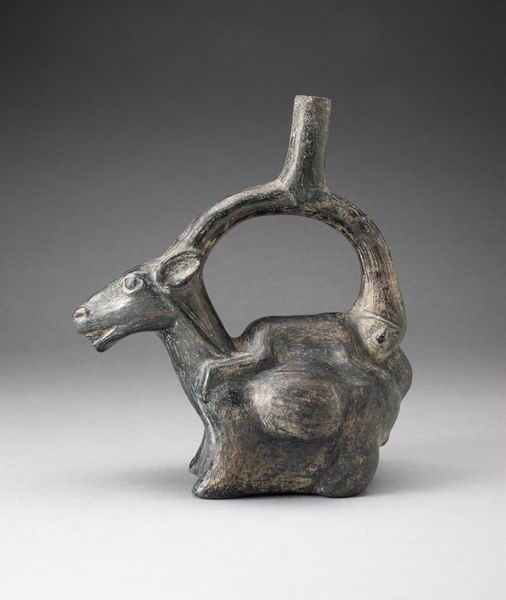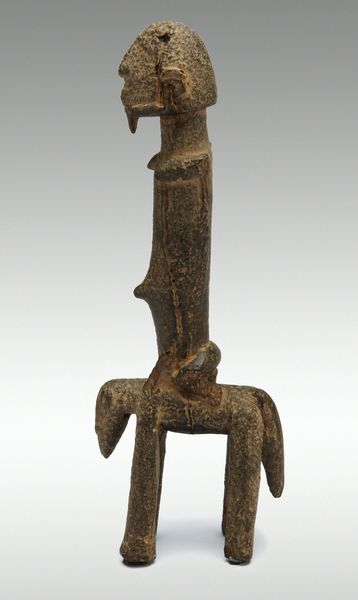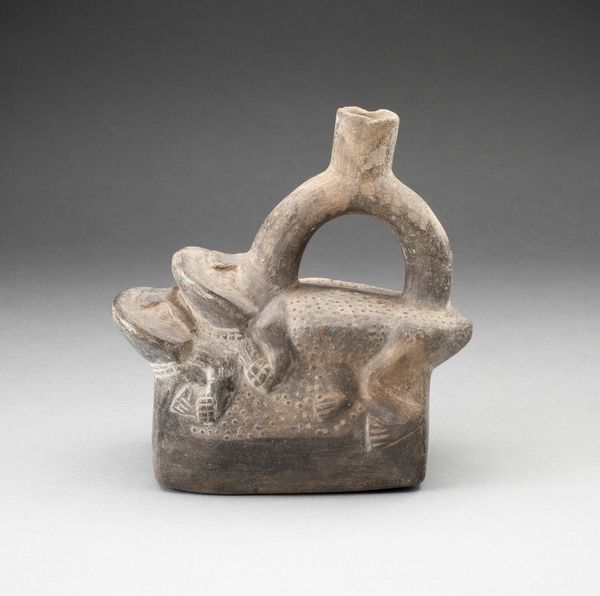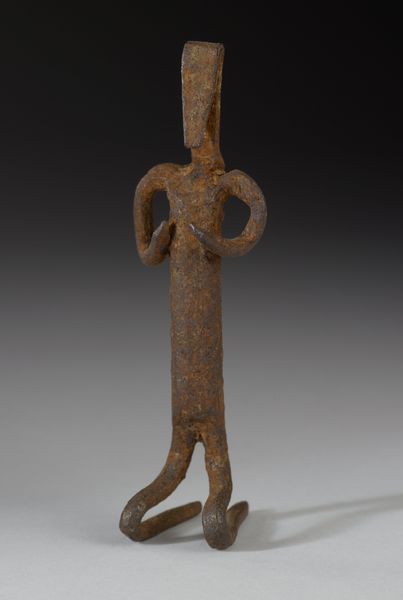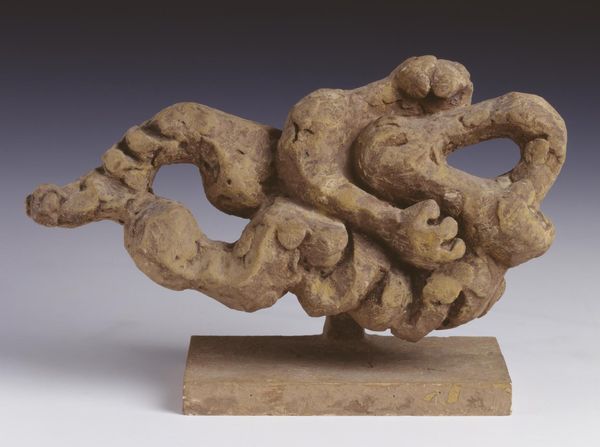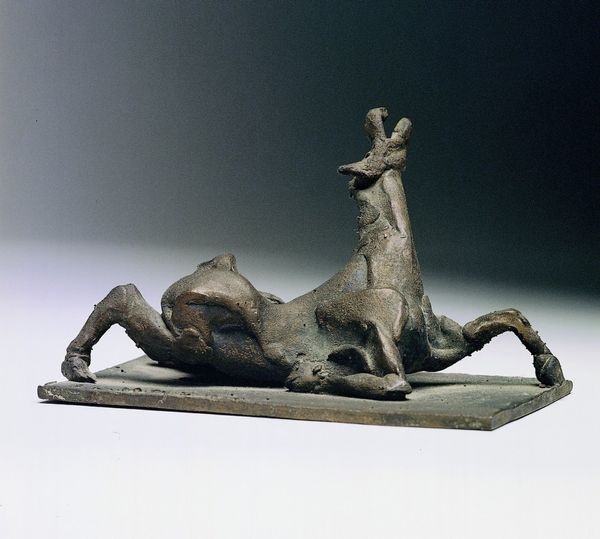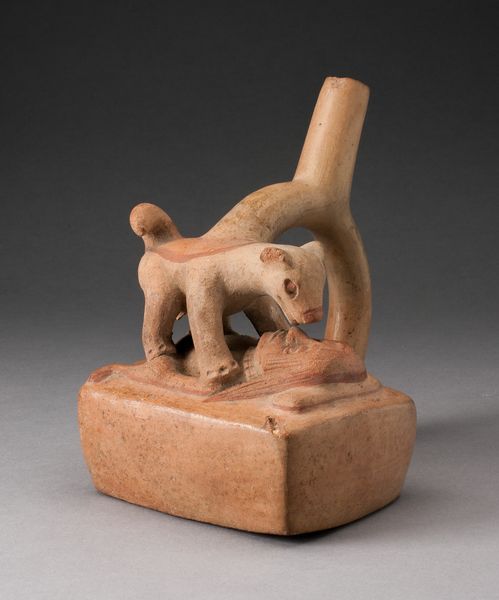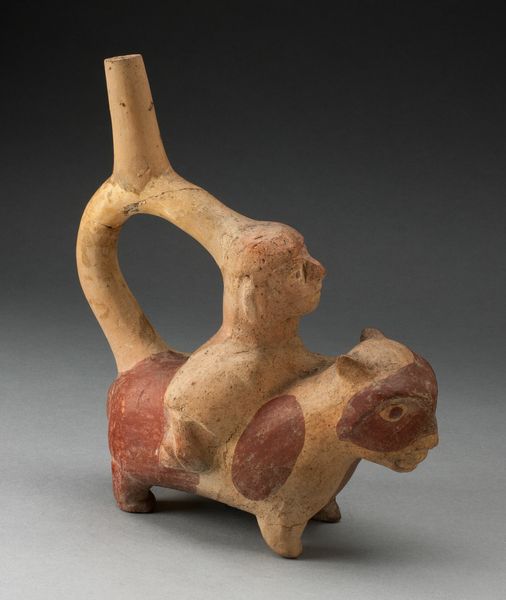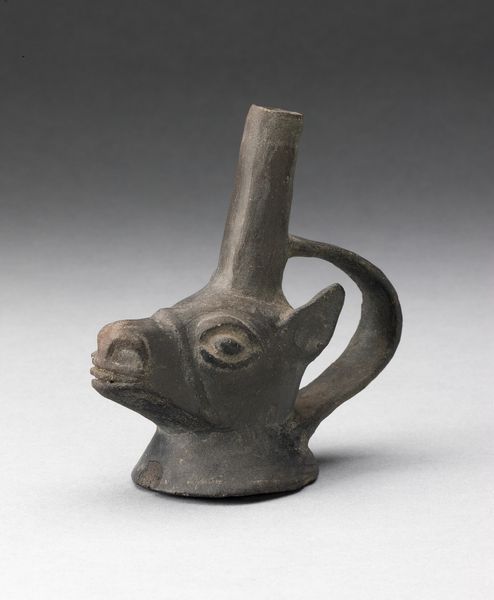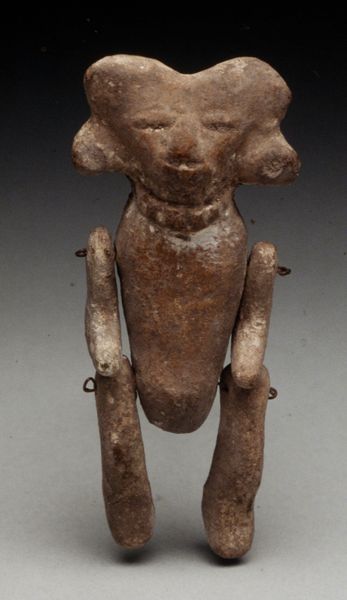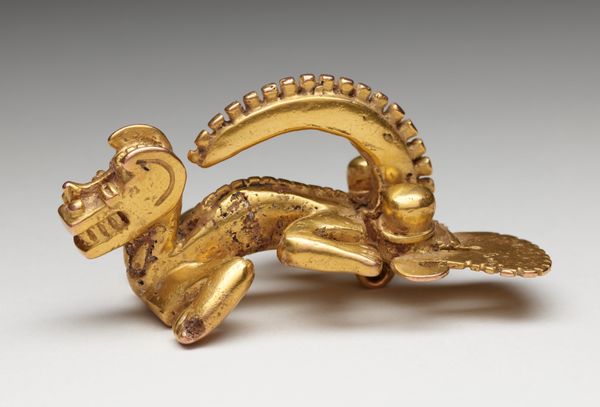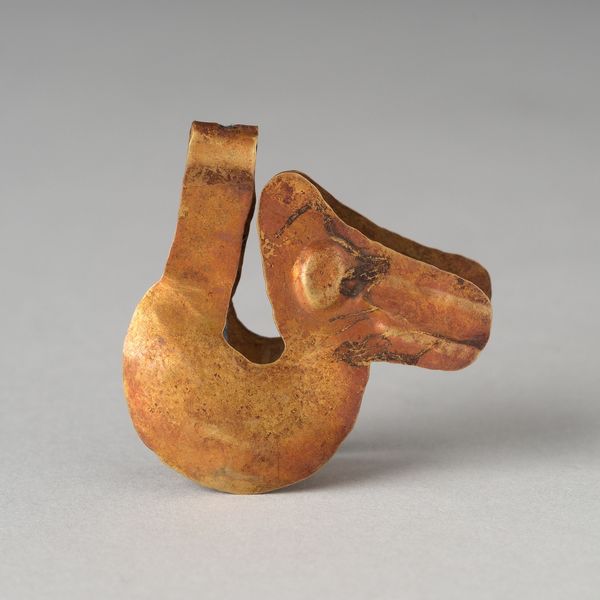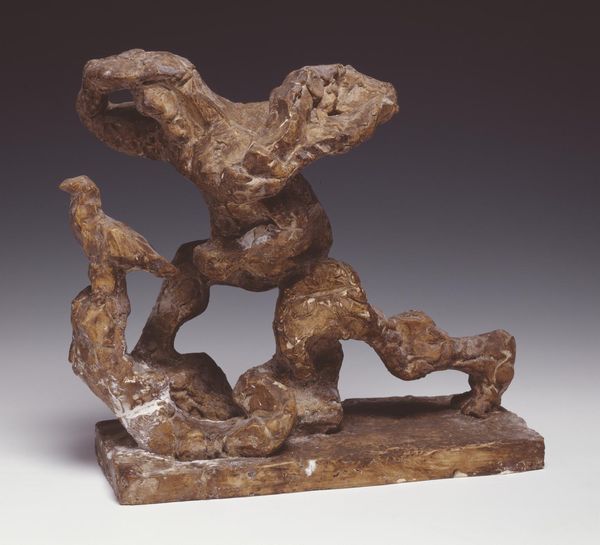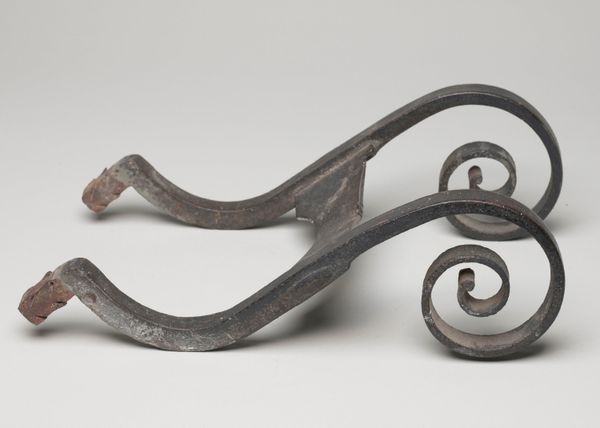
bronze, sculpture
#
medieval
#
sculpture
#
bronze
#
sculpture
Dimensions: 4 7/8 x 3 5/8 x 7 1/4 in. (12.38 x 9.21 x 18.42 cm)
Copyright: Public Domain
Curator: Here we have an intriguing example of medieval metalwork, “Bit and Cheek Plaques,” dating back to around the year 899. They reside here at the Minneapolis Institute of Art. Editor: My immediate impression is of austerity mixed with latent aggression, seeing the stylized ibex figures cast in bronze. There’s a kind of subdued violence in their elegant design. Curator: Interesting choice of words. Technically speaking, the use of the lost-wax casting method in its construction offers insights into the artist’s, and indeed, medieval artistry. The patina alone creates an indexical record, a visual story if you will, marked in subtle chemical changes. Editor: I see a record of use, undeniably, yet the symbolism tied to horsemanship is very prevalent. The power dynamics inherent in human and animal domestication interests me more—the bridle serves as both restraint and tool, imposing societal will onto living creatures. It makes me reflect on agency. Curator: The symmetry, the interplay between positive and negative space. Don’t these elevate function into artistry? And note, too, the precision involved here. Such work is hardly an expression of brute domination; it speaks more about refinement. Editor: The ‘refinement’ also served those in positions of power. Elite status was inextricably linked to such symbols of control. This pairing of beast and object, then, reinforces this idea of power by portraying equines under subjugation, representing a subtle visual vocabulary to indicate social roles. Curator: While that power aspect is certainly pertinent, reducing the analysis to social standing neglects the intricate designs of form. Look at the curvilinear emphasis! See also, how it implies both function and grace within constrained dimensions. Editor: True. Nevertheless, such aesthetics mask inherent hierarchies, where these horses and those riding them take very disparate positions inside systems that allow their co-existence to happen. To me, its beauty should be placed carefully, mindful of implications. Curator: That’s food for thought indeed. As always, finding the fulcrum within formal components that still account towards meaning creates an insightful viewing encounter. Editor: Right! I now see beyond its form and to where art and world touch. Such objects were certainly enmeshed to our mutual historical past.
Comments
No comments
Be the first to comment and join the conversation on the ultimate creative platform.
